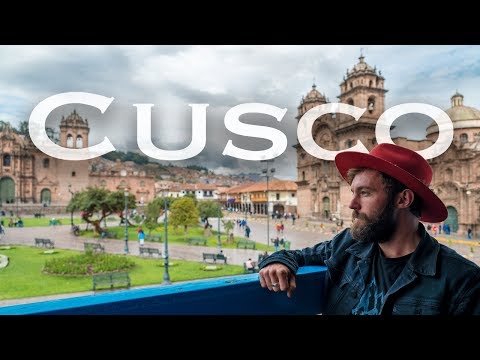
Nestled high in the Andes Mountains at an elevation of over 11,000 feet, Cusco is a city that entwines mystical ancient history with vibrant contemporary culture, making it a must-visit destination for travelers from around the globe. Once the heart of the sprawling Inca Empire, Cusco today serves as a crucial gateway to the sacred ruins of Machu Picchu. But there is much more to explore in this UNESCO World Heritage Site. From its cobbled streets lined with Inca walls to its colorful festivals, Cusco offers an enchanting glimpse into a world where past and present coexist beautifully.
## History and Culture
Cusco was the historic capital of the Inca Empire from the 13th until the 16th-century Spanish conquest. During this period, it was known as the ‘Navel of the World,’ a central point from which roads stretched to all corners of the empire. The Spanish conquest left its mark on the city with ornate cathedrals and colonial architecture built atop or beside Incan constructions.
Today, Cusco’s rich cultural tapestry is evident in its architecture and in its people who celebrate their indigenous roots with pride and joy. Festivals such as Inti Raymi (the Festival of the Sun) and Corpus Christi offer travelers an opportunity to witness traditional festivities full of pageantry, music, and dance.
## Must-Visit Attractions
### The Historic Center
The heart of ancient Cusco is its Plaza de Armas, surrounded by restaurants, cafes, and important historical buildings like La Catedral de Santo Domingo—a colonial church built on top of an Incan palace. Nearby is Qorikancha (the Temple of the Sun), which was once plastered in gold until it was plundered during the conquest.
### Sacsayhuamán
This walled complex just outside Cusco showcases impressive Incan engineering skills with massive stones cut so precisely that they fit together without mortar. The site also offers panoramic views over all of Cusco.
### San Blas
This bohemian neighborhood is known for its narrow winding streets, artisan workshops and beautiful whitewashed houses. It’s a great place for picking up handcrafted souvenirs made by local artisans.
### Museums
Cusco has several museums worth visiting like Museo Inka which houses an extensive collection of artifacts from Pre-Columbian civilizations; Museo de Arte Precolombino which contains pre-Columbian artworks from all over Peru; and Museo de Arte Popular where you can appreciate folk art from across Peruvian regions.
## Cuisine
Peruvian cuisine is gaining international recognition and Cusco is no exception when it comes to delicious dining options that range from traditional street food to gourmet restaurants. Be sure to try local specialties such as *cuy* (guinea pig), *alpaca steak*, and *chupe de camarones* (shrimp soup). Corn beer or chicha can be found throughout Cusco and provides a refreshing way to wind down after a day’s explorations.
## Day Trips
### Sacred Valley
The Sacred Valley lies between Cusco and Machu Picchu and is dotted with ancient ruins like Pisac with its famous market where locals sell handicrafts every Sunday; Ollantaytambo, best known for its fortress; and Moray with its intriguing circular terraces believed to have been used for agricultural experiments by Incans.
### Machu Picchu
No trip to Cusco would be complete without visiting Machu Picchu, accessible via train or by following one of several trekking routes such as the iconic Inca Trail. The mysterious citadel remains one of South America’s most impressive sights.
## Practical Tips
– **Altitude Sickness:** Acclimatizing to high altitude can take time so it’s advisable to rest upon arrival.
– **Weather:** Due to high altitude temperatures can drop significantly at night even during summer months so packing layers is essential.
– **Transportation:** Navigating around Cusco can be done easily on foot within central areas but taxis are available for longer distances at reasonable rates.
Exploring Cusco offers more than just a peek into ancient history; it provides a vibrant palette of experiences that resonate deeply whether through interactions with local traditions or breathtaking landscapes. As both a sanctuary for heritage preservationists and an open-air museum alive with festival spirit – your journey here will undoubtedly be memorable.
